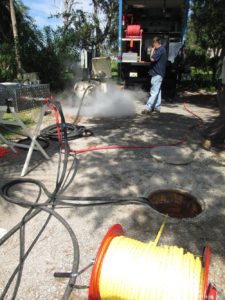The most recent flooding in South Carolina left a strain on many cities, including loss and need for renewal in many neighborhoods and communities. Some Carolinians are now forced with the task of putting their homes back together, including the landscaping. There are a few trouble-free solutions that can help to revive your yard. The duration of flooding, and the severity of plant damage, will be a factor in the livelihood of garden plants. Many landscape plants, especially native trees and shrubs, can survive being submerged for up to a week. Other plants, like azaleas, won’t fare so well. Most transitory landscape plants will defoliate after a flood. Don’t be quick to remove branches that have lost leaves because they may still exhibit growth. A sewage-like odor in the soil results from lack of oxygen. Water covering the soil reduces oxygen to plants’ roots. The sediment that is deposited further decreases oxygen to roots. These factors work together to smother tree and plant roots. Break up and remove flood sediment by hosing it off with fresh water and raking. One tablespoon of dish washing soap per gallon of water in a sprayer tank is an excellent way to clean silt off plant leaves. If silt is extra thick add a teaspoon of dishwasher rinsing agent to your spray tank. Then be sure to rinse with a spray of clean water.
Sewer news: an overflow recently occurred in North Charleston due to a rupture in the sewer line, where raw sewage entered the ditches along the sewer easement located in the proximity of Coosaw Creek. The area of the overflow will be cleaned and disinfected to minimize any possible contamination.
Coming soon: Perma-Liner Industries is busy making plans for you. We’re planning a “Trenchless Tour” on July 27th in the New England area. We’ll be posting more information on this spectacular event…stay tuned and save the date!
























